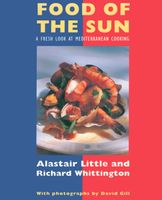Advertisement
Mezze & First Courses
Appears in
By Alastair Little and Richard Whittington
Published 1995

A chapter about mezze and starters begs the questions why and what is the difference? When asked about their impressions of what is typical Eastern Mediterranean food, most people will invariably identify mezze as a key determinant - a defining factor, if you like, which says this is something different from what you will find anywhere else. It is food that reflects a way of life and a culture of hospitality. When you pause for liquid refreshment you are offered something to eat with your drink. This can be so small it is almost symbolic, or it can be a grande bouffe, the sort of elegant overload that shouts out ‘party time, eat until you drop’. Much more, it describes a food style and one that has an ancient heritage but is also, on consideration, about as modern as you can get. For better or worse, we live today in a food culture where people eat as whim or hunger dictates. Restaurants, increasingly, are no longer formal centres for ritual dining, but places to use when the customer dictates. It is a world where we - and not the restaurateurs - decide when and what to eat. Two first courses and no pudding? A plate of oysters and a glass of wine? Why not? The French have done it for years in the brasserie, and in the Mediterranean it is an eating style so taken for granted that to comment on it is frankly bizarre.

